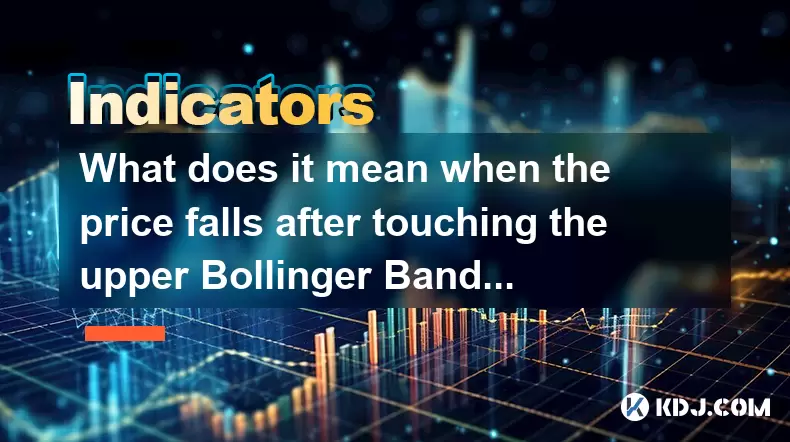-
 Bitcoin
Bitcoin $114800
-0.87% -
 Ethereum
Ethereum $4776
1.26% -
 XRP
XRP $3.035
-0.59% -
 Tether USDt
Tether USDt $0.9997
0.01% -
 BNB
BNB $868.3
-2.21% -
 Solana
Solana $207.8
2.24% -
 USDC
USDC $0.9999
0.00% -
 Dogecoin
Dogecoin $0.2321
-2.70% -
 TRON
TRON $0.3658
1.42% -
 Cardano
Cardano $0.9042
-1.85% -
 Chainlink
Chainlink $25.67
-0.24% -
 Hyperliquid
Hyperliquid $43.96
1.17% -
 Sui
Sui $3.679
-2.11% -
 Stellar
Stellar $0.4091
-1.83% -
 Ethena USDe
Ethena USDe $1.000
-0.01% -
 Bitcoin Cash
Bitcoin Cash $593.4
0.58% -
 Avalanche
Avalanche $25.53
0.89% -
 Hedera
Hedera $0.2476
-1.21% -
 Litecoin
Litecoin $119.7
-1.84% -
 UNUS SED LEO
UNUS SED LEO $9.609
0.34% -
 Toncoin
Toncoin $3.352
-0.91% -
 Shiba Inu
Shiba Inu $0.00001292
-2.45% -
 Uniswap
Uniswap $11.08
-1.13% -
 Polkadot
Polkadot $4.100
-1.09% -
 Cronos
Cronos $0.1609
4.53% -
 Dai
Dai $0.9999
0.00% -
 Bitget Token
Bitget Token $4.706
-0.88% -
 Aave
Aave $350.1
2.03% -
 Monero
Monero $268.0
0.06% -
 Ethena
Ethena $0.7069
-4.77%
What does it mean when the price falls after touching the upper Bollinger Band?
When price touches the upper Bollinger Band, it may signal overbought conditions, but confirmation via volume, RSI, and candlestick patterns is crucial before trading the reversal.
Aug 13, 2025 at 11:35 am

Understanding the Bollinger Band Structure
The Bollinger Bands consist of three lines: a middle simple moving average (SMA), typically set at 20 periods, and two outer bands that represent standard deviations above and below this SMA. The upper band is calculated by adding two standard deviations to the SMA, while the lower band subtracts the same. These bands dynamically expand and contract based on market volatility. When volatility increases, the bands widen; when it decreases, they narrow. The primary purpose of Bollinger Bands is to identify overbought or oversold conditions and potential reversal points. When the price touches or moves beyond the upper Bollinger Band, it often signals that the asset may be overbought, meaning upward momentum could be exhausting.
Price Reaching the Upper Band: Initial Implications
When the price touches the upper Bollinger Band, it suggests strong bullish momentum. This touch can indicate that buyers are in control and pushing the price higher. However, this does not automatically imply a reversal. In strong uptrends, prices can ride along the upper band for extended periods, a phenomenon known as a "ride the band" scenario. The key distinction lies in context: if the touch occurs after a sharp rally with high volume, it may reflect overextension. Traders monitor whether the price closes above, on, or below the upper band. A close below the upper band after touching it increases the likelihood of a pullback, especially if accompanied by bearish candlestick patterns like shooting stars or bearish engulfing formations.
Why Price Falls After Touching the Upper Band
A price drop following contact with the upper Bollinger Band often reflects profit-taking or mean reversion behavior. As the price reaches extreme levels relative to recent volatility, traders who entered earlier may decide to lock in gains. This selling pressure can outweigh incoming buy orders, leading to a downward move. Additionally, the statistical principle behind Bollinger Bands assumes that prices tend to revert to the mean (the middle SMA). When the price moves two standard deviations above the mean, the probability of a correction increases. The fall may also be reinforced by technical traders using the upper band as a signal to short or exit long positions, creating a self-fulfilling prophecy.
Confirming the Reversal: Key Indicators and Tools
To assess whether a drop after touching the upper band is a temporary pullback or the start of a deeper correction, traders use additional tools:
- Volume analysis: A spike in volume during the price drop confirms strong selling interest.
- RSI (Relative Strength Index): If RSI is above 70 when the price touches the upper band, it confirms overbought conditions, strengthening the reversal signal.
- Candlestick patterns: Look for bearish reversal patterns such as evening star, dark cloud cover, or bearish harami at the touch point.
- MACD (Moving Average Convergence Divergence): A bearish crossover (signal line crossing above MACD line) around the same time supports the downside move.
- Price action relative to the middle band: If the price breaks below the middle 20-period SMA after falling from the upper band, it suggests weakening momentum.
Practical Steps for Traders Observing This Signal
When the price touches the upper Bollinger Band and begins to fall, traders can take the following actions to manage risk and capitalize on the move: - Wait for confirmation: Do not act solely on the touch. Wait for the price to close below the upper band and observe for bearish candlesticks.
- Set entry points: For short positions, consider entering after a confirmed break below the upper band with increased volume.
- Place stop-loss orders: Position stop-loss above the recent swing high or above the upper band to limit risk if the trend resumes upward.
- Use trailing stops: If already in a long position, consider switching to a trailing stop based on the lower band or recent price lows.
- Monitor re-entry signals: Watch for price to stabilize near the middle band or lower band for potential reversal setups in the opposite direction.
Differentiating Between Pullbacks and Trend Reversals
Not every drop after touching the upper band leads to a sustained reversal. In a healthy uptrend, periodic pullbacks to the middle or lower band are normal. To differentiate: - Trend structure: Check if higher highs and higher lows are still forming. Their persistence suggests the uptrend remains intact.
- Band slope: An upward-sloping upper band indicates bullish momentum; a flattening or downward slope may signal weakening strength.
- Multiple touches: If the price touches the upper band multiple times without a significant drop, it shows sustained buying pressure.
- Volatility contraction: A subsequent narrowing of the bands (the "squeeze") after a drop may precede a new breakout in either direction, requiring further confirmation.
Frequently Asked Questions
Can the price remain above the upper Bollinger Band for a long time?
Yes, in strong trending markets, especially during breakout phases, the price can stay above the upper band. This is common in parabolic moves seen in cryptocurrencies. The bands may expand to accommodate the new volatility, and the price can continue rising without immediate reversal.Does a touch of the upper band always lead to a price drop?
No, a touch does not guarantee a drop. In bullish trends, the upper band can act as support. The outcome depends on market context, volume, and broader trend strength. Always combine Bollinger Bands with other indicators for higher accuracy.How should I adjust Bollinger Band settings for cryptocurrency trading?
While the default 20-period SMA and 2-standard deviation settings work for many, crypto's high volatility may benefit from adjustments. Some traders use a 50-period SMA with 2.5 deviations for smoother bands, or a 14-period with 1.5 deviations for more sensitivity. Backtesting on specific assets is recommended.Is it safe to short every time the price hits the upper Bollinger Band?
No, blindly shorting based on this signal is risky. False signals occur frequently, especially in strong uptrends. Always wait for confirmation through price action, volume, and confluence with other technical indicators before entering a short trade.
Disclaimer:info@kdj.com
The information provided is not trading advice. kdj.com does not assume any responsibility for any investments made based on the information provided in this article. Cryptocurrencies are highly volatile and it is highly recommended that you invest with caution after thorough research!
If you believe that the content used on this website infringes your copyright, please contact us immediately (info@kdj.com) and we will delete it promptly.
- Cryptos, Market Cap, 2025 Potential: Spotting the Next Big Thing
- 2025-08-24 16:45:35
- Shiba Inu vs. Layer Brett: Price Prediction and the Meme Coin Evolution
- 2025-08-24 17:05:29
- Viral Memes, RWA Platforms, and DePIN Crushers: What's Hot in Crypto?
- 2025-08-24 14:45:20
- Meta's Hypernova Glasses: AR's Next Big Thing?
- 2025-08-24 15:05:15
- Down Under Showdown: Australia vs. South Africa in ODI Cricket
- 2025-08-24 15:10:14
- XYZVerse, Shiba Inu, and the 2025 Bull Cycle: A Meme Coin Evolution
- 2025-08-24 13:05:12
Related knowledge

What does it mean when the +DI and -DI cross frequently in the DMI indicator but the ADX is flattening?
Aug 11,2025 at 03:15am
Understanding the DMI Indicator ComponentsThe Directional Movement Index (DMI) is a technical analysis tool composed of three lines: the +DI (Positive...

What does the sudden appearance of a "dark cloud cover" candlestick pattern during an uptrend indicate?
Aug 13,2025 at 11:35am
Understanding the 'Dark Cloud Cover' Candlestick PatternThe dark cloud cover is a bearish reversal pattern in technical analysis that typically appear...

What does it mean when the moving average, MACD, and RSI all send buy signals simultaneously?
Aug 11,2025 at 01:42pm
Understanding the Convergence of Technical IndicatorsWhen the moving average, MACD, and RSI all generate buy signals at the same time, traders interpr...

What does it mean when both the KDJ indicator and the RSI show overbought signals simultaneously?
Aug 13,2025 at 11:35am
Understanding the KDJ Indicator in Cryptocurrency TradingThe KDJ indicator is a momentum oscillator derived from the Stochastic Oscillator, widely use...

What does it mean when the price is trading above the SAR indicator but the red dots are densely packed?
Aug 09,2025 at 11:49pm
Understanding the SAR Indicator and Its Visual SignalsThe SAR (Parabolic Stop and Reverse) indicator is a technical analysis tool used primarily to de...

What does it mean when the candlestick chart forms a "Morning Star" but trading volume is sluggish?
Aug 12,2025 at 06:28pm
Understanding the Morning Star Candlestick PatternThe Morning Star is a three-candle bullish reversal pattern commonly observed in cryptocurrency pric...

What does it mean when the +DI and -DI cross frequently in the DMI indicator but the ADX is flattening?
Aug 11,2025 at 03:15am
Understanding the DMI Indicator ComponentsThe Directional Movement Index (DMI) is a technical analysis tool composed of three lines: the +DI (Positive...

What does the sudden appearance of a "dark cloud cover" candlestick pattern during an uptrend indicate?
Aug 13,2025 at 11:35am
Understanding the 'Dark Cloud Cover' Candlestick PatternThe dark cloud cover is a bearish reversal pattern in technical analysis that typically appear...

What does it mean when the moving average, MACD, and RSI all send buy signals simultaneously?
Aug 11,2025 at 01:42pm
Understanding the Convergence of Technical IndicatorsWhen the moving average, MACD, and RSI all generate buy signals at the same time, traders interpr...

What does it mean when both the KDJ indicator and the RSI show overbought signals simultaneously?
Aug 13,2025 at 11:35am
Understanding the KDJ Indicator in Cryptocurrency TradingThe KDJ indicator is a momentum oscillator derived from the Stochastic Oscillator, widely use...

What does it mean when the price is trading above the SAR indicator but the red dots are densely packed?
Aug 09,2025 at 11:49pm
Understanding the SAR Indicator and Its Visual SignalsThe SAR (Parabolic Stop and Reverse) indicator is a technical analysis tool used primarily to de...

What does it mean when the candlestick chart forms a "Morning Star" but trading volume is sluggish?
Aug 12,2025 at 06:28pm
Understanding the Morning Star Candlestick PatternThe Morning Star is a three-candle bullish reversal pattern commonly observed in cryptocurrency pric...
See all articles

























































































